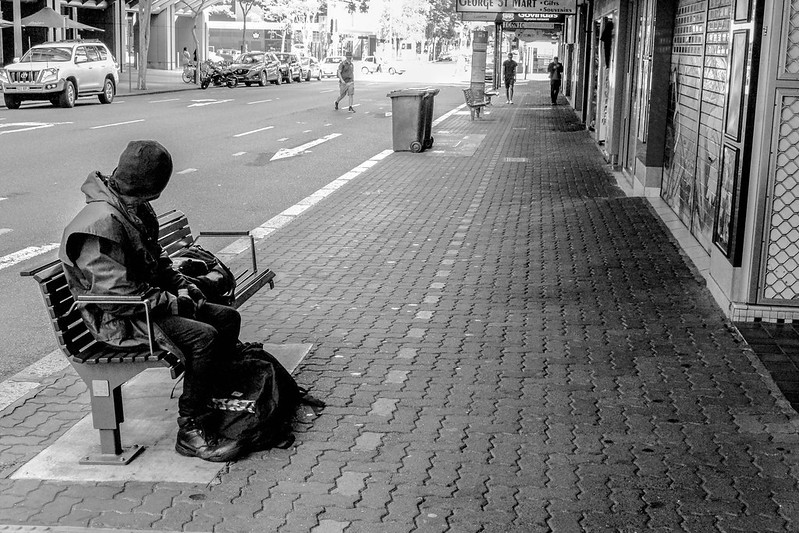When the Everyone In initiative was brought in on March 26th 2020, the assumption was that more than 5,000 people would need emergency accommodation. The National Audit Office report published in January this year[1] gave a number of over 33,000. The MHCLG Select Committee[2] report showed figures for March 2021 even higher, at 37,500. Why the difference? And who has actually been helped?
How many have been helped?
In January, the government published detailed data on how many people in England had been helped by the Everyone In programme up to November 2020[3]. It covered three categories by local authority:
- people who had been moved into settled or supported housing since the emergency began;
- those still in emergency accommodation; and
- people currently sleeping rough.
The NAO’s report added the first two groups together – people who had moved on into settled accommodation plus those still in emergency accommodation to give the total number of people who they stated had been helped by the programme.
This rather simple addition misses the dynamics of the situation in two distinct and opposite ways:
- some people voluntarily fell out of emergency accommodation, but then came in again – maybe more than once over the months. But the government only gives the gross figures, so overestimating the number of individuals actually assisted;
- on the other hand, quite large numbers have found their own solutions rather than being placed in settled accommodation – thus just looking at those still in emergency accommodation or helped into settled accommodation gives an underestimate of the numbers initially supported.
How big are these numbers? Evidence from several London authorities suggests that the numbers leaving voluntarily might in some areas be as high as a quarter of those given initial assistance. But we have very little idea of what then happened to them – or of how many re-entered the system.
In some sense it doesn’t matter what the overall scale of the problem and the level of assistance has been – people were helped; people left; some made their own way; others came back to be helped again; still others have fallen through the cracks and may have re-emerged on the streets.
Where it does matter is in looking forward: if longer term policies are going to be based on the experience of Everyone In we must have a better understanding of the dynamics of the process and the costs and effectiveness of different elements of the initiative.
How many were actually sleeping on the streets?
Everyone In did two distinct things; it brought those who were living on the streets into emergency accommodation and it moved people who were unsuitably housed into Covid-19 secure units. Most if not all of the second group were already in the system, being helped by charities and other housing providers in night shelters, hostels and other shared accommodation. Clearly this group needed to be moved into Covid-19 secure accommodation and that process was very successful. But with their support needs often already in place they should have generated fewer additional costs. Being unable to separate these two groups results in both a large overestimate of the numbers immediately affected by street homelessness and almost certainly some misunderstanding of what is required into the future.
A second issue in understanding the numbers relates to how they grew and continued to grow. By the end of April 2020, some 5,400 people had been accommodated under the scheme, and it was stated that that included around 90% of those sleeping rough. By November the government’s figure accounting for those who were still in emergency accommodation or had been moved on to secure accommodation was 33,000+ – more than six times the original number. The latest figures are even higher.
There is evidence from London that the numbers of people sleeping rough for the first time increased very considerably during the first lockdown and that there were also large numbers of people who sleep rough intermittently and might therefore have come forward later[4]. It also almost certainly reflects the fact that some people may have been in and out of the system a number of times. But it is the first-time rough sleepers that are probably of most significance.
The reasons that drive first-time rough sleepers on to the streets appear to be two-fold: those who are thrown out from their accommodation – mainly from lodgings or sofa surfing and those who lose their jobs because of the pandemic and cannot afford their housing. These clearly overlap. But there may also have been a small number who by the nature of the scheme thought that it was worth sleeping rough for a while to get support and an offer of accommodation possibly into the longer term.
None of this is to deny that those who were accommodated didn’t need that housing (although in some cases there may have been cheaper options), but it is to say that most of the the people coming forward for the first time during the pandemic were very different from those being housed at the beginning – and should needed far less continuing support once their immediate problem has been addressed.
It is also worth noting that by no means all single people who faced housing problems went the rough sleeping route. Comparable numbers went directly to local authority homelessness services and either received prevention advice or were accommodated in temporary accommodation (usually without support services).
How many have been moved on successfully into settled accommodation
The move-on figures first presented by MHCLG in November 2020 showed that around 23,000 people had moved into settled accommodation by gaining a private tenancy with six months or more security or being accommodated in social housing. The latest figures are of over 26,000.
Importantly the definition of move-on accommodation has now been clarified to note that the numbers include moves not just to settled accommodation but to supported housing which may be either long or short term. The relative proportions are unknown but clearly have very different implications. What is most surprising about these figures is that it had been possible to move on 26,000 plus people, given the pandemic restrictions.
Conclusions
The story of the Everyone In initiative is almost universally seen as a major success story by which large numbers of people were taken directly off the streets, accommodated mainly in hotels, given appropriate support and moved on successfully to settled accommodation.
But these are the headline figures. While many – and many more than originally intended – benefitted enormously, the story is very much more complex – and indeed much fuzzier – than at first appears. In particular, we know little about the attributes of the continuing stream of those coming forward; about the costs incurred; and particularly about the final outcomes. It is therefore very difficult to take lessons forward into more normal times.
List of References
[1] National Audit Office (2021), Investigation into the Housing of Rough Sleepers during the COVID-19 Pandemic – National Audit Office (NAO) Report. Accessed 12 April 2021. https://www.nao.org.uk/report/the-housing-of-rough-sleepers-during-the-covid19-pandemic/.
[2] HCLG Committee (2021), Protecting the homeless and the private rented sector: MHCLG’s response to Covid-19, https://committees.parliament.uk/publications/5342/documents/53217/default/
[3] MHCLG (2021), Coronavirus (COVID-19) emergency accommodation survey data: November 2020.
[4] New Policy Institute (2021), Rough Sleeping in London: Back to the Old Normal, Not Building Back Better’. Accessed 10 May 2021. https://www.npi.org.uk/blog/housing-and-homelessness/rough-sleeping-london-back-old-normal-not-building-back-better/.
Access the full supporting study – Homelessness and rough sleeping in the time of COVID-19
Read the previous blogposts in this series
Read the supporting blogposts on Trust for London blog




